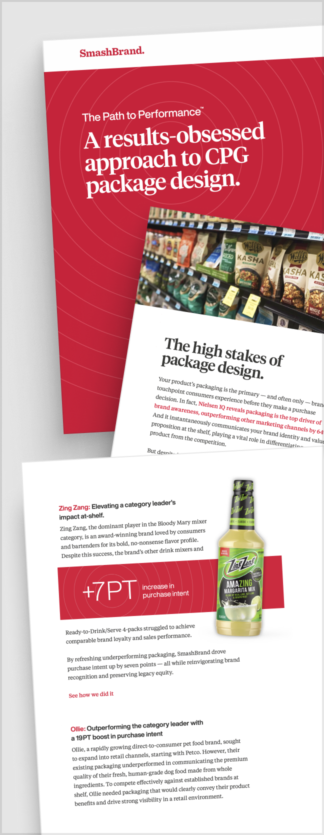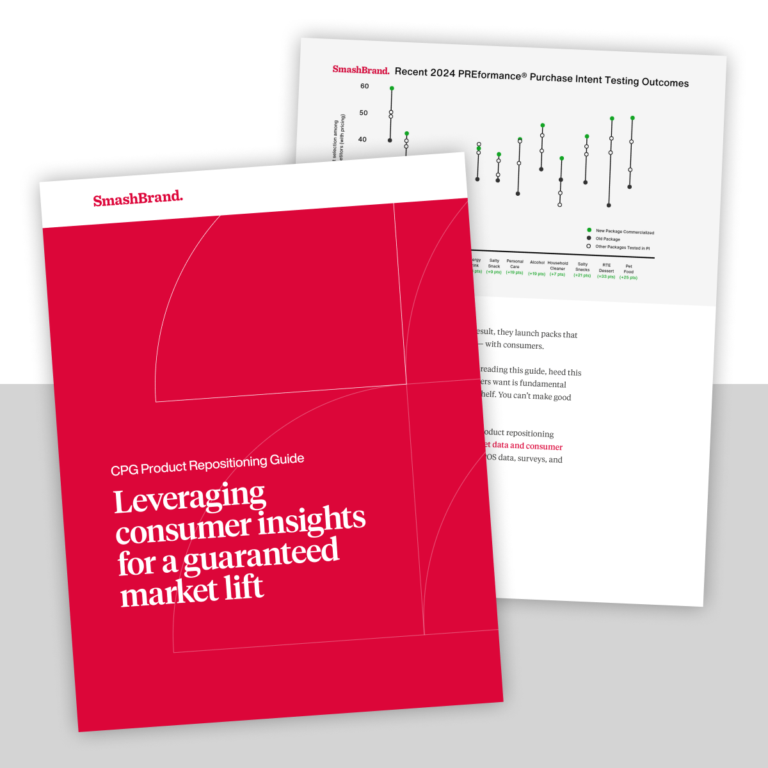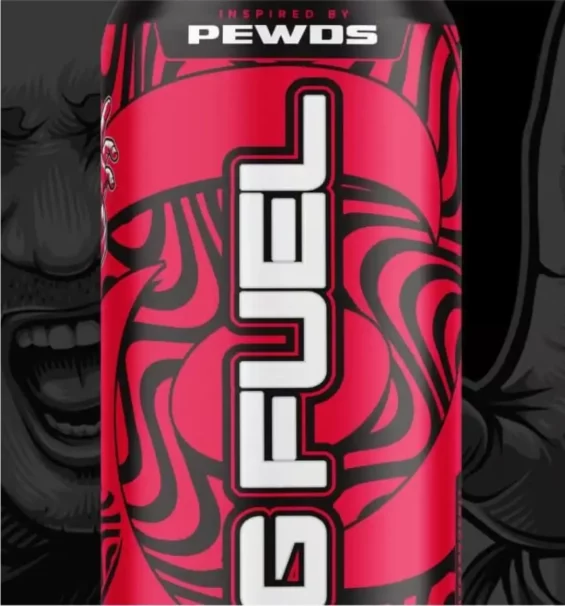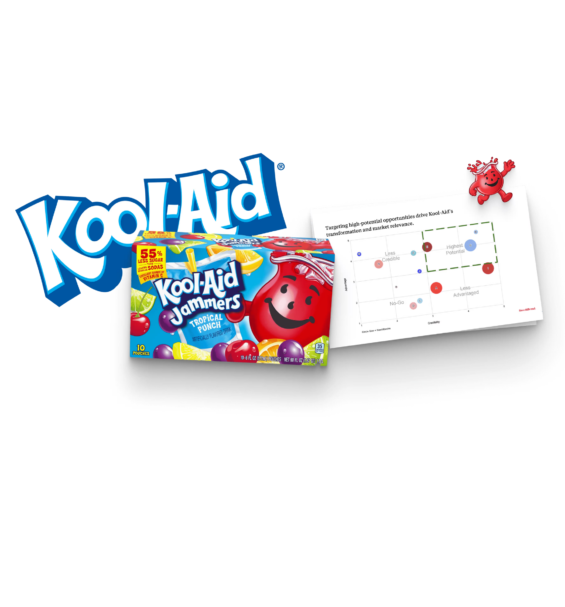Winning in the CPG landscape isn’t just about having a great product; It’s about correctly identifying the target consumer who is a product fit for your offering and communicating to them effectively through messaging and design. That’s where retail consumer targeting comes in. By leveraging advanced customer segmentation techniques and insights from retail customer segmentation, brands can precisely focus on their ideal target audience.
The result? Better reach, more substantial connection, and a greater likelihood of a great customer experience. Add the rise of in-store advertising, and the game changes entirely—making understanding your target market more essential than ever. This article will explore how brands can master these strategies to dominate the shelf and win over today’s discerning customers.
The stakes in retail for CPG brands.
The retail shelf is a battlefield where brands have seconds to capture consumers’ attention. A strong brand development strategy can make all the difference in this high-stakes environment.
Competition is fierce—visual clutter, pricing wars, and shifting customer behavior challenge even the most established players. Traditional approaches often fail because they overlook the nuances of consumer behavior and the dynamic needs of target customers and instead chase trends or what competitors are doing.
Winning requires actionable customer data paired with deep insights from market research and market segmentation. Retailers seek brands that engage shoppers better than the competition and create impulse category trial. To succeed, brands must deliver an unmatched customer experience and leverage every insight to stand out in crowded aisles.
What is retail consumer targeting?
Retail consumer targeting is a positioning strategy that impacts the entire marketing campaign. It is designed to understand and influence consumers at the critical moment of purchase. Unlike broader consumer targeting, which spans multiple touchpoints, retail consumer targeting focuses on converting a potential customer into a buyer in a specific retail setting.
Retail consumer targeting relies on insights into customer behavior from market research and market segmentation to identify purchase drivers. This data helps brands create optimized designs, engaging messaging, and targeted advertising tailored to resonate in a retail environment. Retailers benefit from these strategies by boosting customer engagement and streamlining the marketing campaign for maximum shelf impact.
The goal is to drive sales and build customer loyalty by delivering an exceptional in-store experience. Every marketing effort in retail consumer targeting is about influencing immediate decisions, making it a sharper tool for measurable results compared to traditional targeting methods.
The building blocks of retail consumer targeting.
Successful retail consumer targeting is built on a strong foundation of data and strategy. Companies can effectively tailor every marketing effort to engage their customer base by analyzing the brand development index and streamlining the process. A refined marketing strategy ensures each customer segment is reached, turning shoppers into loyal customers through impactful, data-driven marketing.
The following are the main building blocks of retail consumer targeting:
Data-driven insights.
Data-driven insights are the backbone of effective retail consumer targeting, giving marketers the tools to create strategies that truly resonate with consumers. By analyzing more than POS data, brands can track retail sales trends and uncover actionable patterns in consumer preferences. Shopper panels provide direct feedback, helping fine-tune messaging and packaging to meet customer satisfaction goals.
Loyalty programs can be leveraged to gather invaluable data on purchasing habits to deepen connections with each existing customer, ensuring a more personalized approach. Combined with omnichannel marketing, these insights allow brands to connect with customers seamlessly across all touchpoints, reinforcing consistency in their campaigns.
Companies must leverage:
- POS Data: To understand real-world purchase trends, pinpoint top-performing SKUs, and identify key drivers of consumer behavior.
- Shopper Panels: To gather qualitative and quantitative insights about what influences buying decisions and how products perform in competitive contexts.
- Competitive Analyses: To evaluate market gaps and opportunities, ensuring your brand is positioned to outperform rivals.
These insights guide every decision, from design to messaging, ensuring strategies resonate with the target audience and drive retail success.
Purchase driver testing.
The first 10 seconds at the shelf can determine whether a shopper becomes a buyer. SmashBrand’s Purchase Driver Testing maps this critical journey to uncover:
- What visual elements catch a shopper’s eye?
- Which claims or features most influence purchase intent?
- How your product stacks up against competitors.
We refine packaging and messaging using predictive testing methodologies to ensure they deliver maximum impact during this short decision window.
This approach informs creative brand development by aligning design elements with key motivators, driving customer acquisition and repeat purchases. Testing packaging concepts at different stages of brand development ensures that every iteration better connects with new customers while maintaining loyalty from existing ones.
When integrated into retail marketing, predictive testing highlights what works and doesn’t in a competitive retail environment. This data-driven method ensures that packaging and messaging are optimized to stand out, ultimately increasing purchase intent and creating a smoother path to retail success.
Strategic packaging and design.
Strategic packaging and design are fundamental to retail consumer targeting. They ensure that products resonate with shoppers at the moment of decision-making. Packaging acts as a silent salesperson in the retail store, grabbing attention while instantly communicating key product benefits tailored to the ideal customer’s preferences.
Packaging answers critical brand development questions:
- Does it stand out?
- Does it connect with the customer journey?
- Does it appeal to new customers while nurturing brand loyalty?
Effective packaging design leverages insights into consumer behavior, turning these insights into visuals and messaging that align with customers’ needs. By addressing the priorities of both loyal and prospective shoppers, strategic packaging amplifies retail success, making it indispensable for targeting efforts in a competitive market.
Iterative approach.
The iterative Approach is a cornerstone of retail consumer targeting. It continuously enables brands to refine strategies and designs for optimal retail performance. Through brand innovation and packaging tweaks, brands align with evolving customer needs and preferences to maximize impact.
This process is rooted in testing and feedback loops at each stage. By tracking the customer journey, analyzing performance, and iterating on designs or advertising campaigns, brands ensure their packaging remains relevant and compelling. It also fosters long-term success by reinforcing brand loyalty and responding to shifting market demands.
This approach minimizes risk, enhances adaptability, and consistently meets customer needs for retail brand development. It ensures that every iteration sharpens targeting efforts, improving shelf visibility and purchase intent.

Path to Performance™
Taking a results-obsessed approach to CPG package design.
Learn how SmashBrand’s proprietary process – rooted in scientific principles, informed by data, and validated by your target audience – takes the guesswork out of package design and delivers guaranteed results.
Proven strategies for retail success.
Retail Success merges data-driven insights with precise targeting to engage your target audience and enhance conversions. Here are the established strategies for achieving retail success:
Winning the first impression.
Winning the First Impression is a vital strategy for retail consumer targeting, where packaging must immediately grab attention in a cluttered aisle. A strong brand innovation strategy ensures designs are bold, clear, and aligned with consumer expectations, avoiding missteps that lead to brand dilution, such as confusing messaging or inconsistent visuals.
Techniques include conducting a retail shelf audit to evaluate competitors and optimize packaging for standout appeal. Use high-impact colors, straightforward typography, and concise benefit messaging to communicate value at a glance. Ensuring consistency with brand identity reinforces trust and recognition while effectively addressing consumer needs.
Color blocking is a powerful visual strategy in the CPG retail environment. It uses bold, contrasting colors to create eye-catching product packaging. It helps brands stand out on crowded shelves, guiding shoppers’ attention to key areas like logos or benefits. Effective color blocking enhances visibility, reinforces brand identity, and drives purchase decisions.
Messaging that converts.
Packaging must instantly communicate value to drive retail sales. Concise, benefit-driven messaging ensures your ideal customer understands the product’s key advantages in seconds. By leveraging consumer segmentation and analytics, brands can tailor accurate messaging that resonates with new customers while reinforcing loyalty for repeat purchases.
Prioritizing hierarchy optimization—prominently placing the most compelling benefits—guides the shopper’s eye and strengthens decision-making. This approach seamlessly integrates with retail marketing and customer acquisition efforts, ensuring that packaging attracts and converts customers. Precise, targeted messaging turns browsing into buying, enhancing shelf performance and driving measurable success in retail environments.
The power of shelf positioning.
Shelf positioning is a proven strategy for retail consumer targeting. Strategic placement ensures products are positioned at eye level or high-traffic areas, naturally drawing shoppers’ attention. Partnering with retailers amplifies these efforts, creating opportunities for premium shelf space and coordinated promotions. This collaboration and precise product placement maximize visibility and influence purchase behavior, leading to stronger retail performance.
Leveraging consumer feedback.
Brand understanding begins with collecting real-world consumer insights. These insights reveal valuable details about preferences, pain points, and buying behaviors, helping brands identify opportunities for improvement.
Analyzing this feedback allows companies to align their products, packaging, design, and messaging with consumer expectations. For example, tweaks in product design or clear communication of benefits on packaging can drive better shelf performance.
Additionally, feedback guides brands in tailoring marketing efforts to resonate with specific target audiences. Iterating based on these insights ensures strategies remain relevant and consumer-focused. This approach builds trust and fosters loyalty, as customers see their input reflected in the products they buy.
Results you can count on.
When Ollie, a premium pet food brand, partnered with SmashBrand, their goal was to achieve standout performance on crowded retail shelves. Through SmashBrand’s PREformance® testing, the team identified key factors influencing purchase intent, packaging appeal, and competitive positioning. This data-driven approach ensured Ollie’s product resonated with new and loyal customers at the critical point of purchase.
Measurable gains from PREformance® testing.
SmashBrand’s proprietary testing methodology drove significant results for Ollie:
- Improved Purchase Intent: Predictive testing revealed messaging and design elements that connected directly with target audiences, increasing the likelihood of purchase.
- Enhanced Shelf Presence: Packaging was optimized for visual impact, ensuring Ollie stood out in a cluttered retail environment.
- Boosted Sales Velocity: Refined design and messaging drove higher product turnover, proving the effectiveness of the retail consumer targeting strategy.
The Ollie case study demonstrates that accurate retail consumer targeting isn’t just theory—it’s a proven methodology for retail success. Bridges like Ollie achieve tangible, measurable wins by combining in-depth consumer insights with iterative testing and design refinement.
Retail shelves are competitive, but with tools like PREformance® testing and a focused targeting approach, CPG brands can transform their strategies into real-world results that resonate with consumers and drive growth.
Key takeaways and actionable steps.
Retail consumer targeting is a game-changer for CPG brands, offering tangible benefits that drive success in competitive retail spaces. By leveraging precise strategies, brands can reduce risk, accelerate market entry, and achieve better ROI. Understanding consumer behavior at the shelf and using data-driven insights ensures packaging and messaging resonate with the target audience, boosting sales and customer loyalty.
Actionable steps for retail success.
- Invest in Shelf Testing: Conduct retail shelf audits and predictive testing to evaluate packaging and placement effectiveness.
- Refine Your Positioning: Use consumer insights to highlight unique selling points that align with your target audience’s needs.
- Embrace Data-Backed Design: Refine designs using analytics and consumer feedback to ensure maximum impact and clarity at a glance.
- Prioritize Consumer Insights: Gather and analyze real-world feedback to align with shifting preferences and trends.
- Collaborate with Retailers: Partner with retailers to secure prime shelf positioning and create co-branded marketing opportunities.
Implementing these steps can help CPG brands harness the full potential of retail consumer targeting, driving measurable gains and sustainable growth.
Frequently asked questions.
How can smaller CPG brands compete with big players using targeting?
Smaller brands can stand out with precise consumer insights and focused targeting. By leveraging data, optimized packaging, and tailored messaging, they appeal to niche markets, build trust, and gain loyal customers, turning agility into a competitive edge against more prominent players.
What data is essential for retail consumer targeting?
Critical data includes shopper behaviors, purchase patterns, demographics, and competitive analysis. Insights from consumer preferences, sales velocity, and market segmentation help brands design impactful strategies that align with customer expectations and drive conversions.
How do we measure the success of a retail targeting strategy?
Measure success through key metrics like purchase intent, sales velocity, customer loyalty, and shelf performance. Track consumer feedback and data analytics to continuously refine targeting efforts, ensuring sustained results and strong ROI.
Can retail targeting work in online and hybrid shopping models?
Absolutely! Retail targeting adapts seamlessly by leveraging omnichannel insights to align strategies across physical and digital touchpoints. Precise messaging, personalized experiences, and data-driven campaigns drive engagement in traditional and hybrid shopping environments.
Subscribe to
Nice Package.
A monthly newsletter that unpacks a critical topic in the FMCG & CPG industry.
Free Resource.

CPG product repositioning guide.
Explore the five undeniable signs your CPG product needs repositioning along with strategies for leveraging consumer insights for a guaranteed market lift.
Learn More About CPG product repositioning guide.

